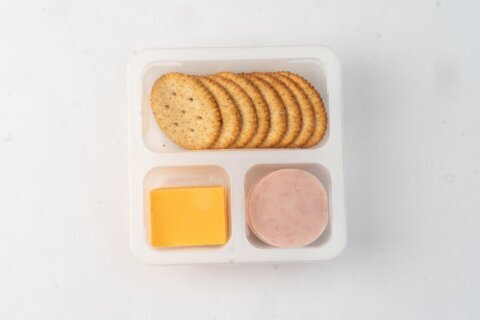Any parent can tell you that packing their child’s lunch can be difficult. From including the right kind of juice to remembering to cut off the crusts, packing lunch for your kids can quickly get complicated. Lunch desires change more often than fashion trends. However, when your child has diabetes, school meal preparation becomes even more trying.
As a diabetes specialist with The Optimized Care Network and Touro University California, I understand the importance and special considerations of packing a lunch for a young student who has diabetes. Kids just want to be part of the group, and diabetes is one strong distinction. Each time they eat, they need to be cognizant of many things most people take for granted. People with diabetes often need carefully monitored, balanced diets. This means counting carbohydrate content, which will determine the insulin dosage the child needs at each meal. Whether a child has an insulin pump or insulin injections, parents must keep in mind the foods their kids are eating.
Taking these simple steps can help you prepare a school lunch that will leave your son or daughter happy and healthy:
1. Include a refillable water bottle. In kids with diabetes, the risk of dehydration is greater than the average child because of higher-than-normal blood glucose levels that deplete fluids more quickly. Being dehydrated with diabetes can lead to sudden drops in blood pressure, which could spell trouble during the school day. Keeping a fun, colorful water bottle in your child’s lunch can help him or her stay hydrated.
2. Pack a balanced meal. For your child’s lunch, try to include small servings of a healthy carbohydrate, a lean protein and a “good” fat. This will help your little one fuel up to learn and will keep his or her energy steady throughout the day. Remember, kids like to have fun, and the way you market foods can help build a positive impression. If your child is going to eat school lunch, talk with the food service staff to see about getting weekly menus with carb counts so you can help decide what he or she will be able to eat.
3. Include extra healthy snacks and fast-acting carbohydrate snacks. First, kids with diabetes should have access to low-carb foods or “free foods” they can eat without taking additional insulin. Further, all kids with Type 1 diabetes should have some rescue foods. Sometimes your child’s blood sugar can drop low, and these snacks can prevent hypoglycemia. These are best when they’re portable. A box of raisins or a juice box can be great options.
If your child waits too long between eating, or if he or she has been more active that day, they can drop low — which feels bad and makes it hard to learn. When they drop low (hypoglycemic), they need to activate the “rule of 15s.” They should eat 15 grams of fast-acting carbohydrates and recheck their glucose in 15 minutes.
Here are some examples from the Centers for Disease Control and Prevention that can quickly provide about 10 to 15 grams of carbohydrate:
? 4 to 6 ounces of orange juice
? 2 tablespoons of raisins
? 8 ounces of nonfat or low-fat milk
? 3 to 5 pieces of hard candy
? 4 to 6 ounces of regular (non-diet) soda
4. Write down a food list. Along with the traditional “love notes” you might leave in your child’s lunch, include a list of all the foods you’ve packed your child, along with the corresponding number of carbohydrates in each item. Sometimes the school nurses and/or teachers can help your child calculate how much insulin to give your child at each meal. A list of food items along with carb content will help school staff get your child the right amount of insulin.
5. Talk with the teachers. They may be able to see the pattern of how your child does and may be able to help adjust the things that will keep your child’s glucose stable to maximize fun and learning. It’s key to try to let your child fully engage so he or she isn’t always seen as different. Kids want to fit in. That means having a plan and working as a team to provide the safest and best school experience.
Dr. Jay Shubrook is a professor and director of Diabetes Services at Touro University California and diabetes specialist with The Optimized Care Network.
More from U.S. News
10 Diets That Help Prevent or Manage Diabetes
6 Tips to Keep Diabetics Out of the Hospital
Healthy Snacks for When You Feel Hangry
How to Pack a School Lunch When Your Child Has Diabetes originally appeared on usnews.com







